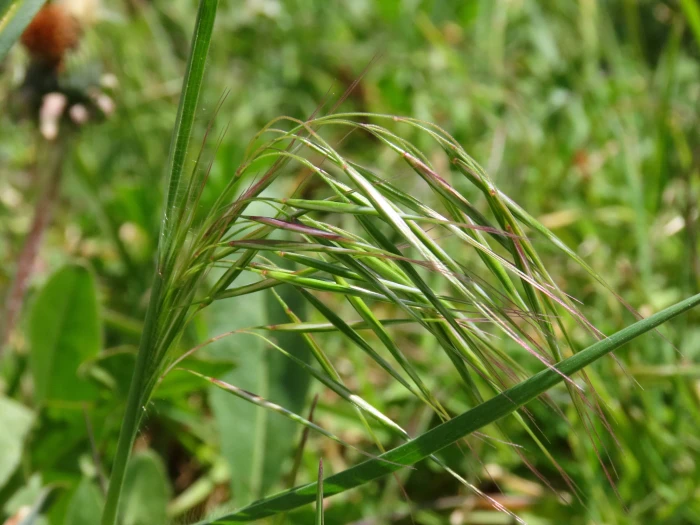Barren Brome
(Bromus sterilis)
Barren Brome (Bromus sterilis)
/
/

Emanuele Santarelli
CC BY-SA 4.0
Image By:
Emanuele Santarelli
Recorded By:
Copyright:
CC BY-SA 4.0
Copyright Notice:
Photo by: Emanuele Santarelli | License Type: CC BY-SA 4.0 | License URL: http://creativecommons.org/licenses/by-sa/4.0/ | Rights Holder: Emanuele Santarelli | Publisher: iNaturalist | Date Created: 2020-04-10T13:12:33-07:00 |























Estimated Native Range
Climate Requirements for Wesley Chapel, Florida
| This Plant | Your Site | Plant Suitability for Your Location | ||
|---|---|---|---|---|
| • Precipitation | 5" - 103" | 51" | Aquatic | Aquatic |
| • High Temp. | 49°F - 104°F | 92°F | Your summer temperatures are normal for this plant. | Excellent |
| • Low Temp. | -0°F - 57°F | 48°F | Your winter temperatures are normal for this plant | Excellent |
This plant may not grow well at your location - your precipitation is too high.
Summary
Bromus sterilis, commonly known as barren brome or sterile brome, is an annual or biennial grass native to a variety of habitats including open woodlands, grasslands, and disturbed sites across Europe, Africa, and temperate Asia. It typically grows to a height of 8-35 inches (20-90 cm) and features rough, hairy leaves. The plant forms loose, nodding panicles with spikelets that are up to 2 inches long, each containing 4-10 flowers that may appear from late spring to early summer. The flowers are not particularly showy, but the grass can add a delicate texture to the landscape.
Barren brome is often found in cultivation as part of wildflower meadows or naturalistic plantings where its ability to self-seed can be beneficial for maintaining a dynamic planting design. It is also used for erosion control due to its fibrous root system. This grass prefers full sun to part shade and can tolerate a range of soil types, from well-drained to moderately fertile. It requires minimal water once established, making it a low-maintenance option for gardeners. However, it can become weedy and potentially invasive outside its native range, so caution is advised when planting in areas where it is not native.CC BY-SA 4.0
Barren brome is often found in cultivation as part of wildflower meadows or naturalistic plantings where its ability to self-seed can be beneficial for maintaining a dynamic planting design. It is also used for erosion control due to its fibrous root system. This grass prefers full sun to part shade and can tolerate a range of soil types, from well-drained to moderately fertile. It requires minimal water once established, making it a low-maintenance option for gardeners. However, it can become weedy and potentially invasive outside its native range, so caution is advised when planting in areas where it is not native.CC BY-SA 4.0
Plant Description
- Plant Type: Grass
- Height: 1-2 feet
- Width: 1-2 feet
- Growth Rate: Moderate
- Flower Color: N/A
- Flowering Season: Spring
- Leaf Retention: Semi-deciduous
Growth Requirements
- Sun: Full Sun, Part Shade
- Water: Medium
- Drainage: Medium, Fast
Common Uses
Erosion Control, Low Maintenance
Natural Habitat
Open woodlands, grasslands, and disturbed sites across Europe, Africa, and temperate Asia
Other Names
Common Names: Poverty Brome, Sterile Brome, Arechi-No-Cha-Hiki, Barren Bromegrass, Bromo-Estéril, Capim-Cevadinha
Scientific Names: Bromus sterilis, Anisantha sterilis, Anisantha sterilis var. sicula, Anisantha sterilis var. stenantha, Anisantha sterilis var. velutina, Avena sterilis, Bromus amplus, Bromus delicatulus, Bromus distichus
GBIF Accepted Name: Bromus sterilis